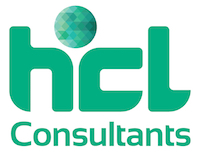Improving investment decisions to ensure wider access to water and wastewater services in Egypt.
This project is about:
Development, implementation, and application of a tailored-made Water & Wastewater Decision Support System (WWDSS) for the HCWW and its Affiliated Companies.
| Context: WWDSS will be developed for the HCWW and 21 ACs located in 21 governorates. It will be structured as an integratable modular system linked to and interacting with an updatable and expandable data base comprising demographic, infrastructure, unit cost, and financial data. | |
| Timeline: Phase I: Nov 2013 – Dec 2016 / Phase II: Jan 2017 – July 2018 | |
| € | Contract value: 2,175,730 EUR |
(1) Unit Cost Calculation Module: aiming to provide cost estimates for capital investment, operation, and maintenance WW projects based on determined unit costs of WW project elements for all types of WW projects (new, expansion, rehabilitation). The module has to cover all possible cost variables and be designed in a way that allows updating of the cost data due to inflation and other factors. In this part, analysis and breakdown of the WW supply costs is expected for sewers, pump stations, force mains, WW treatment plants and should be carried out for different project sizes, locations, and technologies.
(2) Cluster Optimization Module: aiming to develop methodology and guidelines for WW master planning optimization through sequentially optimized clustering of wastewater systems to achieve financial sustainability, economic viability, and economies of scale in the provision of WW service solutions. To this end, detailed cluster optimization studies will be performed in pilot areas of selected governorates.
(3) Priorities and Investment Planning Module: aiming to appraise and prioritize investment pipelines in the WW sector by establishing regional and national level priority criteria to produce regional and national WW investment plans. The criteria should be dynamic in such a way that any change in them be reflected in the priority setting of the investment lists.
(4) Wastewater Reuse Module: aiming to maximize the economic and financial benefits of treated wastewater by evaluating local and international alternatives in the field, determining criteria for different reuse options, and preparing treated effluent reuse plans for the HCWW/ACs.
(5) Sludge Reuse Module: aiming to maximize the economic and financial benefits of wastewater treatment sludge by evaluating local and international alternatives in the field, determining criteria for different reuse options, and preparing sludge reuse plans for the HCWW/ACs.
(6) Management Module: aiming to identify the best management options for the delivery of the WW service by the HCWW/ACs through studying the national and international experience in the field, determining the financial consequences of and identifying selection criteria for each different management option, assessing the participation of the private sector in managing the operation and maintenance of WW projects, as well as preparing a model contract for optimized solutions to this effect.
(7) Funding Module: aiming to identify the best financing options for WW investment plans and develop guidelines to facilitate access of these plans to funds. This will be done through analyzing and exploring different alternatives of funding, including local, national, and international financing options. Private sector financing will, also, be explored. As a product, a guide will be prepared for the Ministry of Housing, Utilities, and Urban Development, the HCWW, and the ACs on how to access such investment funds.
(8) Financial Module: aiming to assess the financial viability of WW investment programmes and their impact on the HCWW/ACs financial statements. The module is considered to be one of the most vital parts of the WWDSS as it seeks to simulate the financial consequences of the different investment planning alternatives on the financial results of the HCWW/ACs. This will be done through a dynamic financial model which will use the outputs of the previous modules to simulate the future cash flows to be generated due to the future investment plans.
(9) Economic Module: aiming to assess the economic viability of WW investment programmes and their impact on the economy by quantifying the economic and socio-economic benefits (development, growth, employment opportunities) of the WW investments on national and local economic levels.
(10) Monitoring and Evaluation Module: aiming to monitor and report the technical and financial progress in the implementation of WW investment programmes and projects (whether new or rehabilitation), evaluate the impact of this progress on existing budgets and investment plans, draw lessons, and apply remedial actions to improve WW investment planning and implementation.

